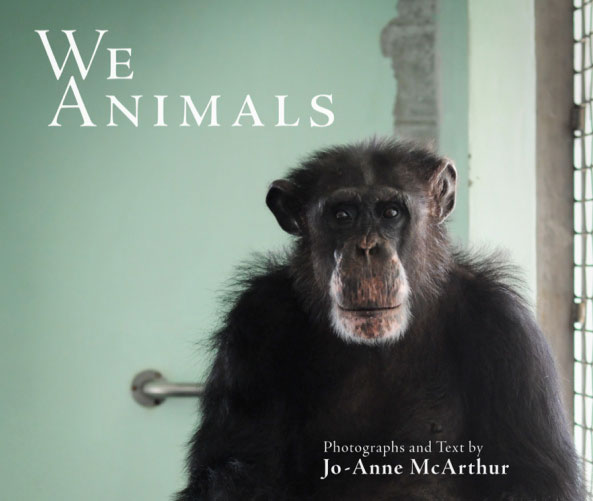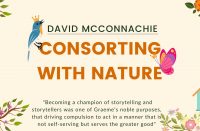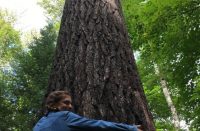One of the first images in Canadian photojournalist Jo-Anne McArthur’s We Animals shows a jade-headed buffalo beetle perched on a piece of wood in a glass terrarium. At first glance, it may seem like an odd choice to begin a book about human-animal relationships with an insect. After all, many people feel squeamish about bugs, or tend not to think about them at all.
One of the first images in Canadian photojournalist Jo-Anne McArthur’s We Animals shows a jade-headed buffalo beetle perched on a piece of wood in a glass terrarium. At first glance, it may seem like an odd choice to begin a book about human-animal relationships with an insect. After all, many people feel squeamish about bugs, or tend not to think about them at all. But the angle of the shot urges viewers to notice how the beetle gazes through the glass, pressing its curvy legs against the surface. “Like many animals in confinement,” McArthur writes in the accompanying text, “he spends much of his time circling his tank, feeling his way along the walls, looking for a way out.”
McArthur’s powerful book exposes the physical and mental barriers people often place between themselves and non-human animals. Even though humans may be very different from species like beetles, We Animals compels the reader to recognize our common connection: the desire to live, and to live freely. Humans may eat and wear animals, or observe animals in zoos, but we remain utterly disconnected from their lives. McArthur’s body of work bridges the gap between “us” and “them,” encouraging humankind to view animals not as products or property, but as equal beings.
We Animals is skillfully organized into five sections. The first three explore how people exploit animals for fashion, entertainment, food and research. The fourth part reveals the more positive side of human-animal relationships, celebrating the lives of rescued animals and their caretakers, animal activists and owners of farm sanctuaries. The final segment contains excerpts from McArthur’s journals. For several years she worked undercover, sneaking into fur and factory farms at night to document the deplorable conditions in which animals are kept. Her writing captures the emotional and physical demands of this work, offering a greater appreciation of the blood, sweat and tears she’s put into documenting this subject during the past decade.
Some of the most disturbing photographs in We Animals come from these covert investigations. There are young minks huddled around the dead body of their mother, a dumpster full of rotting piglet corpses, and broiler chickens cramped inside a concrete building. But McArthur did not always have to sneak around in the dark to unveil such horrors of animal mistreatment. Other photos show a bull bleeding to death in a sunlit arena, a dolphin trapped in a resort lagoon just 50 meters from the ocean, and a flock of sheep climbing a gangplank to be trucked to slaughter.
McArthur frames each shot so that we see but also feel the suffering of each animal endures. In the photograph of the sheep, she captures the moment when one turns his head to look back before taking his final steps onto the truck. We may feel sadness, anger or guilt when we meet the animal’s eye. McArthur’s evocative text intensifies the experience: “This sheep on the gangplank seems to ask whether we are really sure that we have nothing in common with him.”
With so many distressing photographs, it is a welcome relief to also see pictures of animals frolicking in farm sanctuaries and activists cradling rescued animals in their arms. One of my favourites shows a Chadian man, Appolinaire, holding a juvenile female gorilla, Pikin, in the backseat of a moving car. Pikin awoke temporarily from heavy sedation as she was being moved from a vet clinic to a sanctuary enclosure. This kind of photograph will make you want to strengthen your own relationship with non-human animals.
While many images in We Animals are shocking and upsetting, we do animals a great disservice by looking the other way. I would encourage everyone to read this book with an open heart and mind, and to share it with as many people as you can.
We Animals, Jo-Anne McArthur, Brooklyn, New York: Lantern Books, 2014, 208 pages.
This review originally appeared in Sharing, issue 40.2. Subscribe now to get more book reviews in your mailbox!













